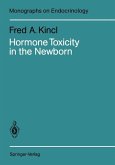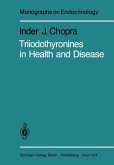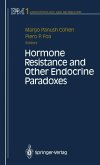There is a strong interest in transthyretin (TTR) in connection with protein evolution, medical and clinical research. Thus, this is an exciting time for experts in TTR research to come together to write a monograph covering both the basic and the clinical research into TTR.
Transthyretin is a protein found in human blood and cerebrospinal fluid. It is directly involved in the transport of thyroid hormones, and indirectly in that of retinol. These hormones are essential for normal growth and development, particularly that of the brain. Spontaneous and inherited diseases affecting transthyretin result in amyloidosis. More than 80 point mutations in transthyretin lead to a variety of illnesses. Liver transplants are the most common treatment, although much research is also being carried out in drug therapies.
The evolution of transthyretin has been extensively investigated - from humans to bacteria, invertebrate animals and plants. The structure of the protein has not changed, but its function has changed significantly. This is a most exciting example for the study of the evolution of protein structure-function relationships.
This monograph will bring the reader up to date on the latest developments and discoveries.
Since its ?rst description in 1942 in both serum and cerebrospinal ?uid, transthyretin (TTR) has had an eventful history, including changes in name from "prealbumin" to "thyroxine-binding prealbumin" to "transthyretin" as knowledge increased about its functions. TTR is synthesised in a wide range of tissues in humans and other eutherian mammals: the liver, choroid plexus (blood- cerebrospinal ?uid barrier), retinal pigment epithelium of the eye, pancreas, intestine and meninges. However, its sites of synthesis are more restricted in other vertebrates. This implies that the number of tissues synthesising TTR during vertebrate evolution has increased, and raises questions about the selection pressures governing TTR synthesis. TTR is most widely known as a distributor of thyroid hormones. In addition, TTR binds retinol-binding protein, which binds retinol. In this way, TTR is also involved with retinoid distribution. More recently, TTR has been demonstrated to bind a wide variety ofendocrine disruptors including drugs, pollutants, industrial compounds, heavy metals, and some naturally occurring plant ?avonoids. These not only interfere with thyroid hormone delivery in the body, but also transport such endocrine disruptors into the brain, where they have the potential to accumulate.
Transthyretin is a protein found in human blood and cerebrospinal fluid. It is directly involved in the transport of thyroid hormones, and indirectly in that of retinol. These hormones are essential for normal growth and development, particularly that of the brain. Spontaneous and inherited diseases affecting transthyretin result in amyloidosis. More than 80 point mutations in transthyretin lead to a variety of illnesses. Liver transplants are the most common treatment, although much research is also being carried out in drug therapies.
The evolution of transthyretin has been extensively investigated - from humans to bacteria, invertebrate animals and plants. The structure of the protein has not changed, but its function has changed significantly. This is a most exciting example for the study of the evolution of protein structure-function relationships.
This monograph will bring the reader up to date on the latest developments and discoveries.
Since its ?rst description in 1942 in both serum and cerebrospinal ?uid, transthyretin (TTR) has had an eventful history, including changes in name from "prealbumin" to "thyroxine-binding prealbumin" to "transthyretin" as knowledge increased about its functions. TTR is synthesised in a wide range of tissues in humans and other eutherian mammals: the liver, choroid plexus (blood- cerebrospinal ?uid barrier), retinal pigment epithelium of the eye, pancreas, intestine and meninges. However, its sites of synthesis are more restricted in other vertebrates. This implies that the number of tissues synthesising TTR during vertebrate evolution has increased, and raises questions about the selection pressures governing TTR synthesis. TTR is most widely known as a distributor of thyroid hormones. In addition, TTR binds retinol-binding protein, which binds retinol. In this way, TTR is also involved with retinoid distribution. More recently, TTR has been demonstrated to bind a wide variety ofendocrine disruptors including drugs, pollutants, industrial compounds, heavy metals, and some naturally occurring plant ?avonoids. These not only interfere with thyroid hormone delivery in the body, but also transport such endocrine disruptors into the brain, where they have the potential to accumulate.
From the reviews: "Transthyretin (TTR) is a relatively abundant thyroid hormone carrier protein found in the blood of vertebrates. ... The authors of the book Recent Advances in Transthyretin Evolution, Structure and Biological Functions have produced a comprehensive reference text that does much to reconcile the evolutionary biology, structure-function relationships and pathophysiology of this remarkable protein. ... In summary, this ... text will prove to be essential reading for both expert and non-expert researchers in the field of TTR biology." (Rob Gasperini, Australian Biochemist, Vol. 41 (1), April, 2010)








